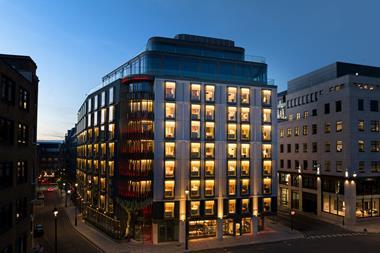The head of retail property fund management at one of the largest real estate investment managers, has suggested some home truths for those involved in the sector.

BY Daniel Herrmann, Head of Fund Management Retail at PATRIZIA
Tomorrow’s increasingly discerning shoppers will expect greater innovation, technology and sustainability. With this in mind, the owners of buildings which house retail units will need to invest in adequate PropTech. Retailers’ green credentials will become paramount as consumers become more aware of the environmental impact of consumption and adapt their traditional shopping habits. Retailers need to be ready to answer consumer concerns about sustainability, including carbon footprints, production methods and working conditions. Those who can’t meet these concerns will lose both reputation and turnover.
ESG will be particularly important for Generation Z, who, by 2035, will become the largest population group. Real estate owners will need to consider what that means for tenants, investors and other stakeholders.
From global to local
As this retail revolution marches on, shops will have to radically overhaul their real estate presence. Firstly, as high street shrinks, it will become more difficult for retailers to preserve a strong foothold in non-prime locations. This will lead to a difficult market for selling high street properties if they’re not state of the art and perfectly located.
Luxury boutiques, meanwhile, will still maintain a strong presence in high-end locations. And the strongest retailers will grow even stronger, seeking out even larger stores in prime locations. Sectors such as mid-market fashion retail and department stores will continue to struggle, but any closures combined with reduced rents will allow local and, perhaps, new types of businesses to step into the void. As a result, we can expect increasing numbers of small neighbourhood stores, with a network of local connections, offering locally sourced goods. Retail is set to become far more localised, helping cities to regain their individual character.
Those who are bold and innovative will also stand out in an increasingly competitive environment. New concepts and business models are gradually materialising as landlords signal their willingness to creatively partner with retailers, especially those willing to plan for growth.
What about investor prospects?
Overall recovery for the retail sector will be slow and uneven. Nevertheless, those looking to invest should take heart. In European high streets and shopping centres, margins may be low and risk up, but the right kind of retail real estate continues to be a strong, defensive and long-term move. However, this is true only following rental level corrections and, in some cases, a partial repurposing of retail space.
From now on, investment managers will need to find a different mix of specific assets to drive returns. This will include ensuring a good mix of tenant activities, such as reducing the weight of fashion retail real estate. It will become more crucial to focus on activities that make the most sense for a specific asset, such as concentrating on food retail, pharmacies, , gastronomy, leisure or co-working. Architectural changes, such as introducing more natural light and open-air spaces, could also help retail properties become more attractive to the right mix of retail.
CapEx for new leases and store fitouts will remain tight in the absence of solid, sustainable signs of recovery. But available space will enable retailers to reduce rental expenses while enhancing the quality of their store network. Turnover rents are not new, but they are becoming more common in high street and shopping centres where landlords are in weak positions. They provide investors with a percentage of the gross revenue from the businesses they lease. While they reduce the tenant’s risk, for landlords it can be difficult to establish a solid business plan on such a basis.
Regardless of the extent of the current economic crisis, consumer demand will eventually resume, albeit in a new form. Those retailers who understand the trends and have reshaped their real estate networks will be ready to tap into them. And potential investors should be poised to react.









